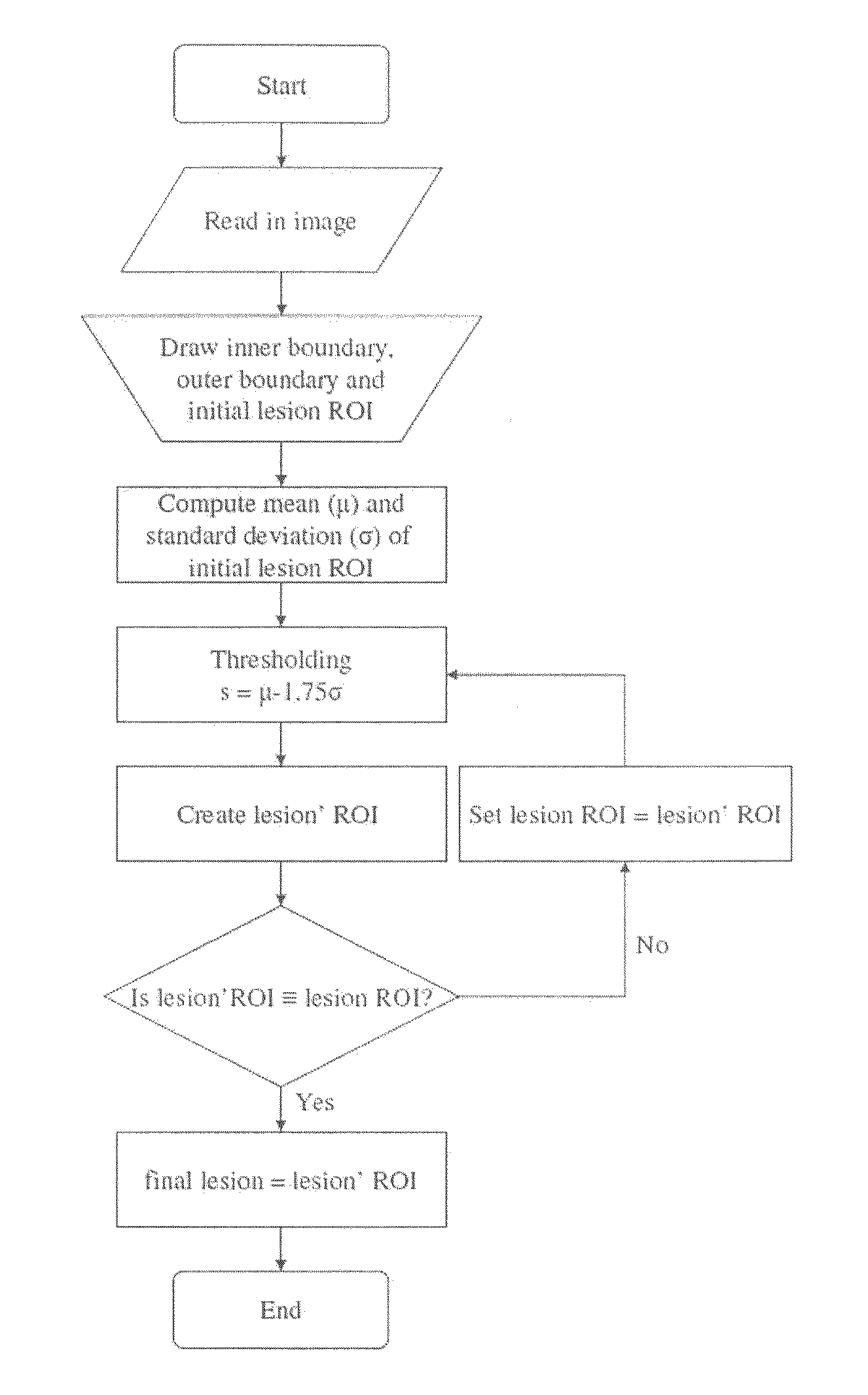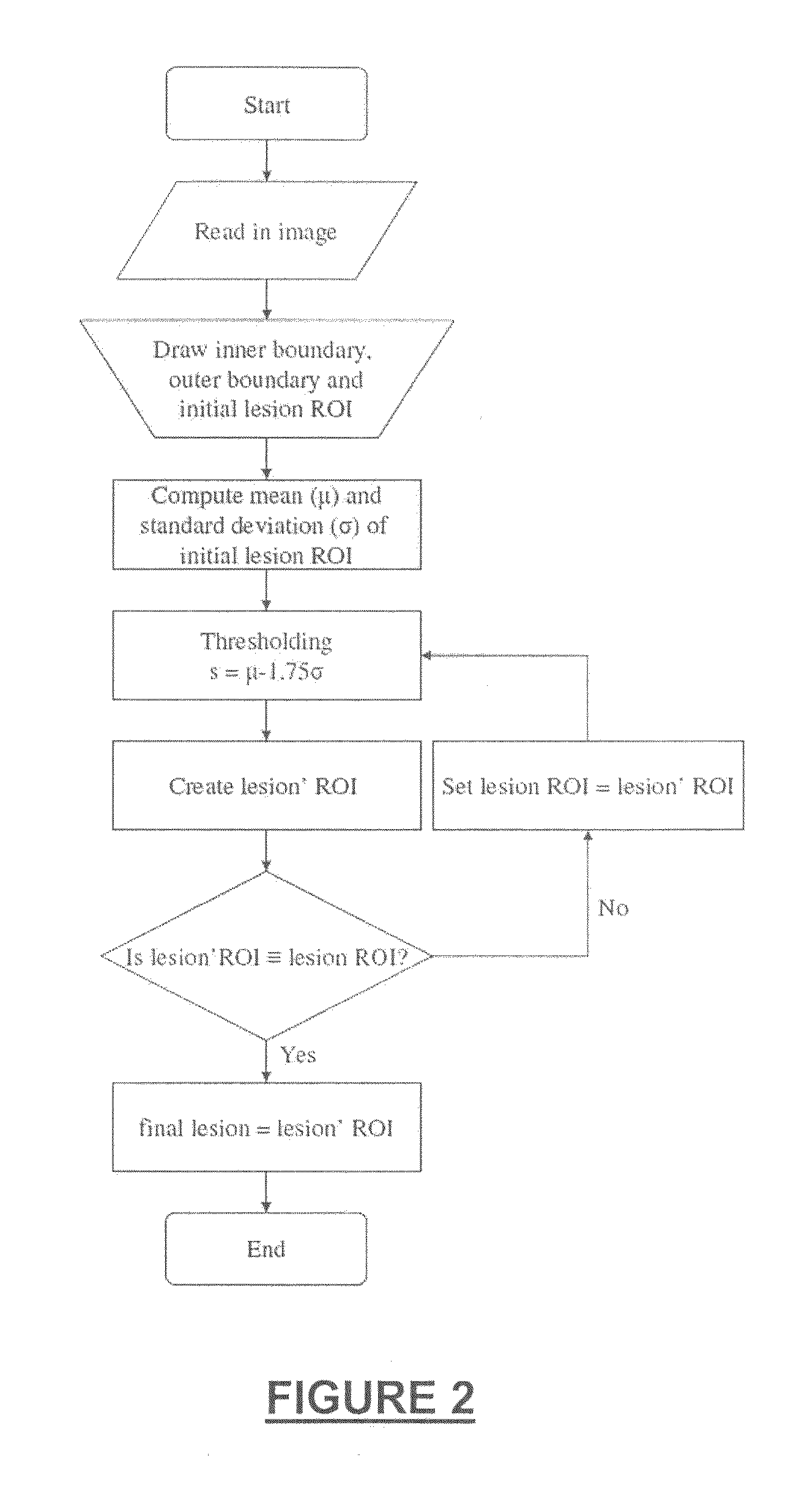System and method for differentiating benign from malignant contrast-enhanced lesions
a contrast enhancement and magnetic resonance imaging technology, applied in the field of dynamic contrast enhancement magnetic resonance imaging, can solve the problems of small positive predictive value (ppv) of biopsies, and the inability to use the presence of enhancement alone to differentiate benign from malignant lesions
- Summary
- Abstract
- Description
- Claims
- Application Information
AI Technical Summary
Benefits of technology
Problems solved by technology
Method used
Image
Examples
Embodiment Construction
Materials and Methods
[0055]Patient Selection
[0056]Patients who underwent standard clinical breast MRI examination at Michigan State University (MSU) Radiology were screened for abnormal contrast-enhancing breast lesions. A lesion was included in this study if it met the following criteria: (1) It was radiologically reported as suspicious for malignancy; (2) it was larger than 7 mm in size and (3) its pathology report was available for comparison. The study included two primary classifications of lesions: (1) malignant tumors histologically diagnosed as infiltrating invasive ductal carcinoma and (2) benign lesions diagnosed as either fibrocystic disease or fibroadenoma. A total of eleven malignant tumors and six benign lesions involving fifteen patients were included in this study. One patient had two lesions: one malignant tumor on one breast and one benign lesion on the other breast. The study was approved by the MSU Institutional Review Board for Research Involving Human Subjects....
PUM
 Login to View More
Login to View More Abstract
Description
Claims
Application Information
 Login to View More
Login to View More - R&D
- Intellectual Property
- Life Sciences
- Materials
- Tech Scout
- Unparalleled Data Quality
- Higher Quality Content
- 60% Fewer Hallucinations
Browse by: Latest US Patents, China's latest patents, Technical Efficacy Thesaurus, Application Domain, Technology Topic, Popular Technical Reports.
© 2025 PatSnap. All rights reserved.Legal|Privacy policy|Modern Slavery Act Transparency Statement|Sitemap|About US| Contact US: help@patsnap.com



